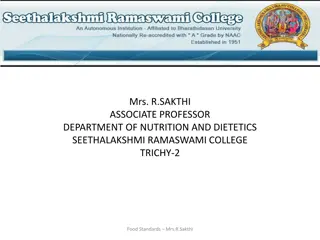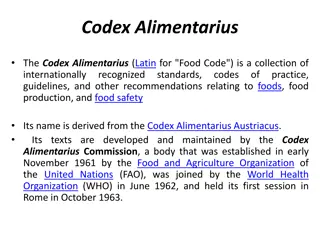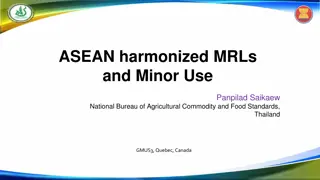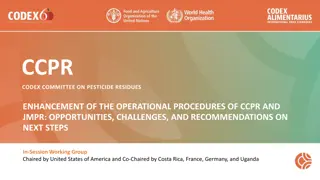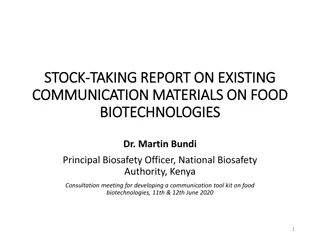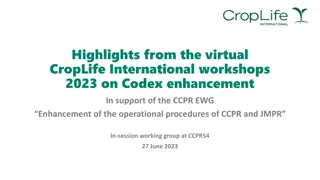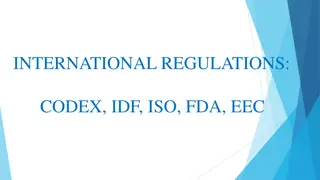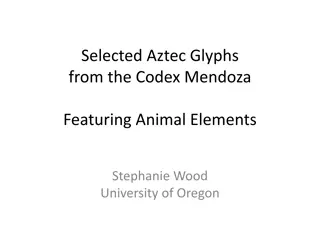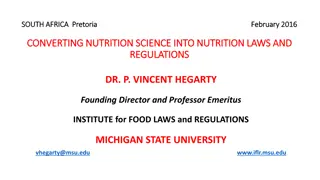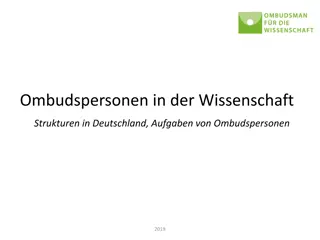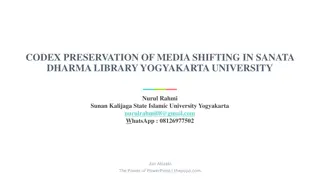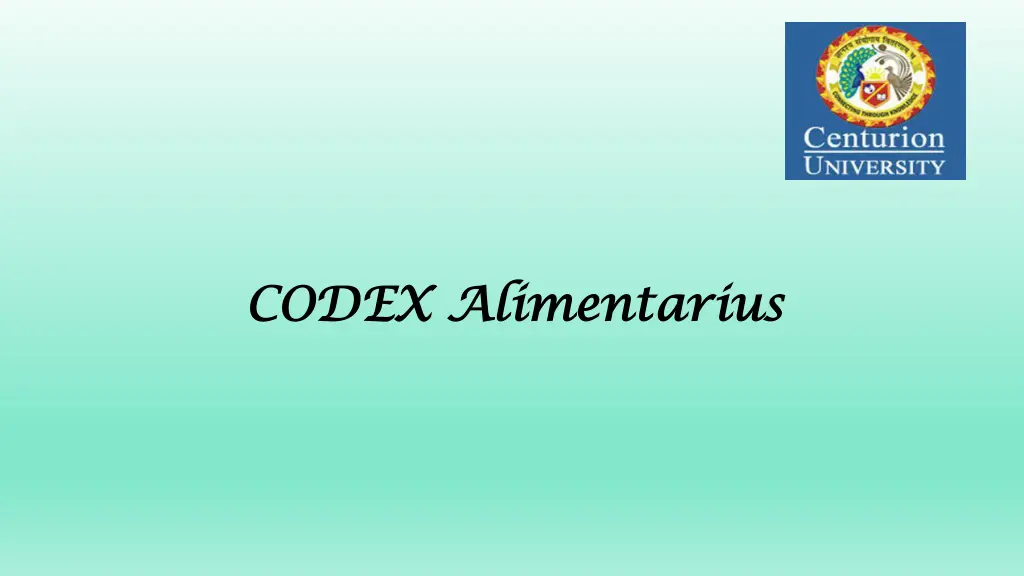
Food Safety Standards and Codex Alimentarius Overview
"Explore the significance of Codex Alimentarius in setting international food standards, protecting consumer health, and ensuring fair trade practices. Learn about its background, scope, objectives, Codex Commission, committees, and the importance of adhering to food requirements. Dive into the world of food hygiene, quality, and regulations for a safer and healthier food industry."
Download Presentation

Please find below an Image/Link to download the presentation.
The content on the website is provided AS IS for your information and personal use only. It may not be sold, licensed, or shared on other websites without obtaining consent from the author. If you encounter any issues during the download, it is possible that the publisher has removed the file from their server.
You are allowed to download the files provided on this website for personal or commercial use, subject to the condition that they are used lawfully. All files are the property of their respective owners.
The content on the website is provided AS IS for your information and personal use only. It may not be sold, licensed, or shared on other websites without obtaining consent from the author.
E N D
Presentation Transcript
CODEX CODEX Alimentarius Alimentarius
Background The word is derived from Latin term meaning Food Law or Legal Food Code Codex is a compilation of International Food Standards adopted by the Codex Commission Covers all basic food types, raw, semi-processed and processed, that are intended for consumption
Scope CODEX covers regulations related to food hygiene and quality that include microbiological standards, food additives, pesticides and residues from veterinary drugs, contaminants, food labeling and marketing, methods for sampling and hazard analysis, food import and export
Codex Commission Developed in 1962 Works in collaboration with FAO and WHO for formulating internationally accepted food safety standards for protecting human health and for ensuring fair trade practices Develop and publish food standards and amend as and when required new technology
Objectives Purpose is to protect consumer health and economic interests and to secure fair trade practices in the food industry Develops the food standards It is an inter-governmental body and open to all UN members (currently 165)
Codex Committees Commodities committees Fats and oils General Subject Committees Food additives Committee on general principles Food labeling Codex committee on Food hygiene Codex committee on Pesticide Residues Codex committee on Food Additives and Cotaminants
Codex Scope Any substance whether processed, partly processed or raw, which is intended for human consumption and includes drink, and any substance which has been used in the manufacture, preparation or treatment of food but does not include cosmetics, tobacco, or substances used solely as drugs Includes Codex Standards, Codex of Practices, and Guidelines and Recommendations
Standards Food requirements intended to provide consumers with a sound, wholesome food product free from adulteration, correctly labelled and presented Includes Name, scope, description, essential composition, and quality factors, food additives, contaminants, hygiene, weights and measures, labeling and methods of analysis, and sampling
Food Additive Standard for Food Additives: Any substance not normally consumed as a food on its own and normally constituting a typical food ingredient, whether or not it has any nutritional value, the intentional addition of which to food for a purpose in the manufacturing or may reasonably be expected to result in it or its byproducts becoming a component of or otherwise affecting the characteristics of such foods
Food Labeling Name of the product List of ingredients (descending order) Net content and drained weight Name and address of the manufacturer Country of origin Lot identification Date marking and storage instructions Instructions for use
Current Standards 237 standards 43 Codes of Practice 33 Guidelines 197 pesticides evaluated 3274 limits of pesticide residues 289 limits of veterinary drug residues 1300 food additives evaluated

